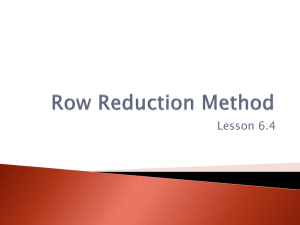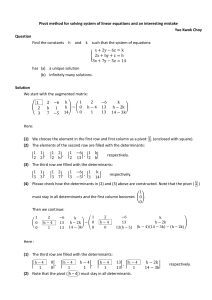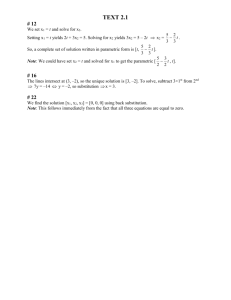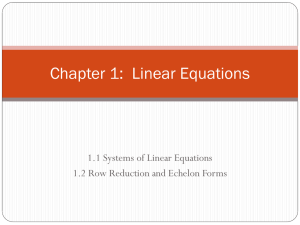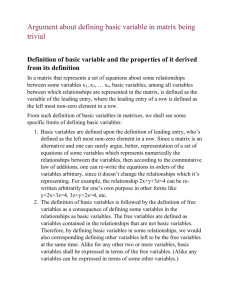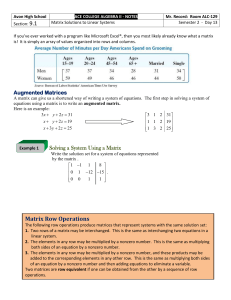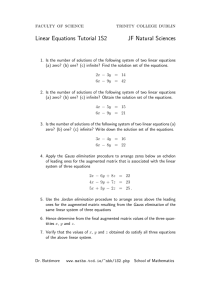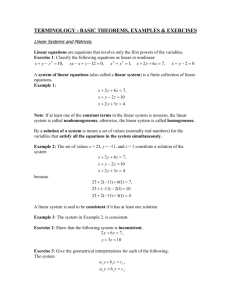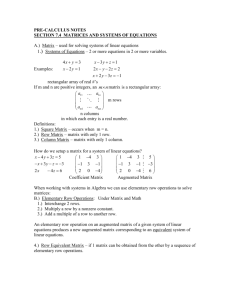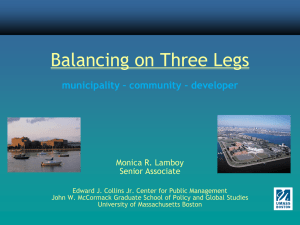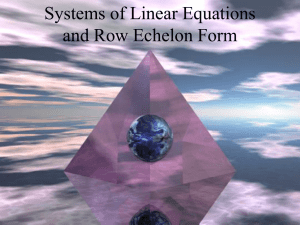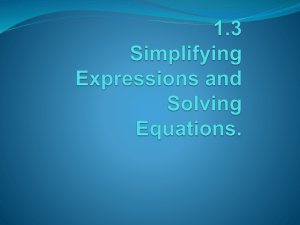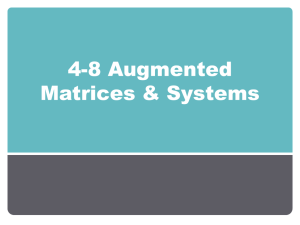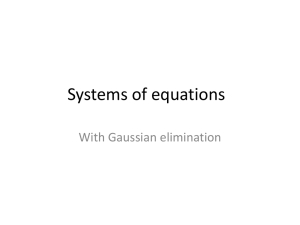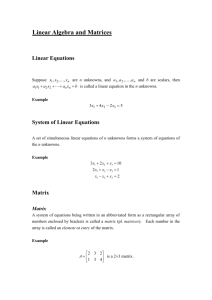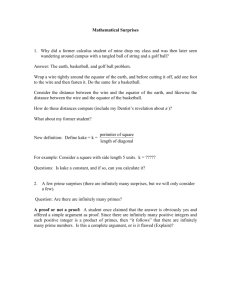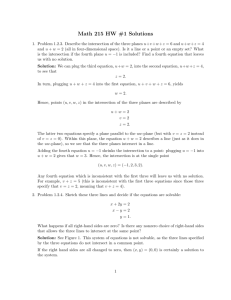Inconsistent Systems
advertisement
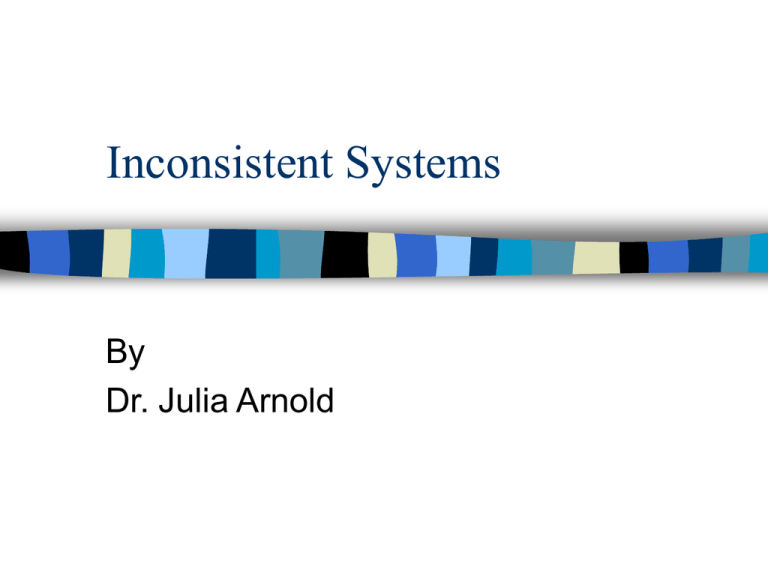
Inconsistent Systems By Dr. Julia Arnold An inconsistent system is one which has either no solutions, or has infinitely many solutions. Example of No solutions: -x + y = -22 3x + 4y = 4 4x - 8y = 32 In this example we have only two unknowns but three equations. To have a solution the third equation must intersect the first two in the exact same location. y = x-22 The graph of each equation would be a straight line. As you can see, the three do not share a common intersection point. -x + y = -22 3x + 4y = 4 4x - 8y = 32 Let’s multiply equation 1 by -1 to get a +1 in the first position and then write the augmented matrix. x - y = 22 3x + 4y = 4 4x - 8y = 32 1 3 4 1 22 4 4 8 32 -3R1 +R2 = -3 +3 -66 3 +4 +4 0 7 -62 -4R1 + R3 = -4 +4 -88 4 -8 32 0 -4 -56 1 0 4 1 0 0 1 22 7 62 8 32 1 22 1 7 62 0 4 56 0 1 22 1 8 . 857 1 14 1 0 0 1 22 1 7 62 0 4 56 0 1 22 1 8 . 857 1 14 This final matrix says y = 14 and it says y = -8.85 which is not possible. Thus no solutions. 1 0 0 1 22 1 1 8 . 857 0 1 14 0 1 22 1 8 . 857 0 22 . 857 By multiplying the last row by -1 and adding to row 2, our last row says 0 = -22.857 which is a false statement and hence no solutions. Having too many equations can be a problem but having the wrong equations can also be a problem. Example 2 of No solutions: x+y+z=3 2x - y - z = 5 2x + 2y + 2z = 7 1 2 2 1 1 2 1 3 1 5 2 7 Set up the augmented matrix and multiply row 1 by -2 -2 -2 -2 -6 then add row 2 2 -1 -1 5 0 -3 -3 -1 Next multiply row 1 by -2 again and add row 3 -2 -2 -2 -6 add row 3 1 1 1 3 2 2 2 7 0 3 3 1 0 0 0 1 0 0 0 1 1 0 0 1 3 0 1 3 3 1 0 1 Since the coefficients of x, y and z are all 0 in the last row, this makes the equation 0 = 1 which is a false statement. Hence No Solutions. Graphically in 3D, this would imply parallel planes cut by the transversal plane. i.e. no common intersection and hence no solutions. Infinitely many solutions: Too many equations can cause no solutions, but too few equations can cause infinitely many solutions as shown in the next example. x + y - 5z =3 x - 2z = 1 Form the augmented matrix and multiply R1 by -1 and add row 2. -1 -1 +5 -3 1 1 5 3 1 0 -2 1 1 0 2 1 0 -1 3 -2 1 0 1 1 5 3 3 2 1 0 1 1 5 3 3 2 Since we have done all we can, we must conclude that the remaining equations are -y +3z = -2 and x + y - 5z = 3 Graphically we know that the intersection of two planes is a straight line. -y +3z = -2 and x + y - 5z = 3 How can we turn this into an answer? We decide that one variable (in this case, either y or z) will be a free variable in that it can take on all values in the Reals. If we decide it should be z then we write the other variables in terms of z as follows -y + 3z = -2 3z = y - 2 3z + 2 = y or y = 3z + 2 Now we write x in terms of z: x + (3z + 2) - 5z = 3 x - 2z +2 = 3 x = 2z + 1 The solution is z = any real number y = 3z + 2 and x = 2z +1 and hence infinitely many solutions. Remember this example from no solutions? x+y+z=3 2x - y - z = 5 2x + 2y + 2z = 7 By changing one number we can go to infinitely many solutions. x+y+z=3 2x - y - z = 5 2x + 2y + 2z = 6 By changing the 7 to a 6 I have created a duplicate equation to equation 1. (Multiply equation 1 by 2) As we work on the matrix we would get the final row to be all zeroes which means 0x + 0y + 0z = 0 which is true. Thus infinitely many solutions. 1 0 0 1 3 0 1 3 3 1 0 0 1 0 0 1 3 0 1 3 3 1 0 0 The two equations remaining: -3y - 3z = -1 and x + y + z = 3 should be treated as in the last example. Let z be any real number (1 - 3z)/3 = y or y = (1 - 3z)/3 x + (1-3z)/3 + z = 3 3x + 1 - 3z + 3z = 9 3x = 8 x =8/3 (8/3, (1-3z)/3,z) form the points of this solution. Practice Problems will be located on a separate power point presentation.
